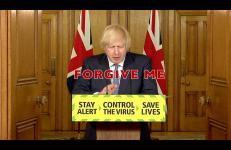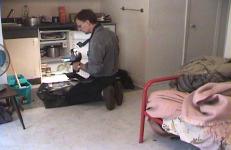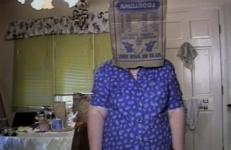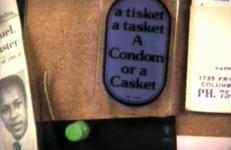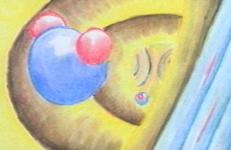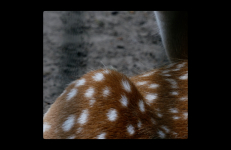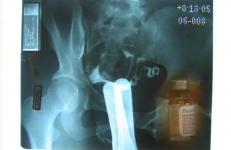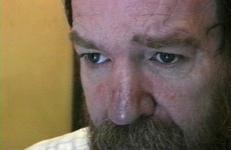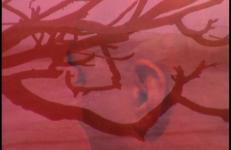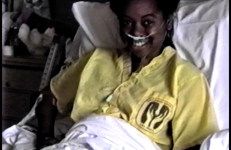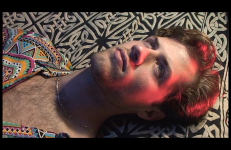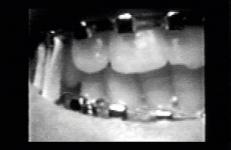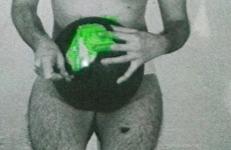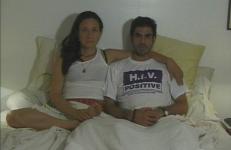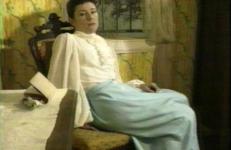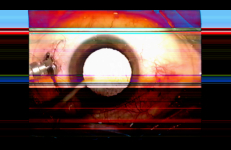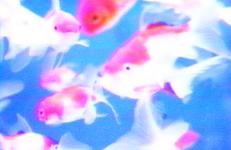Covid Messages is a video in six parts, based around broadcasts of Prime Minister Boris Johnson’s COVID-19 press conferences. The work focusses on the British government’s attempts to eliminate the virus through the use of magic spells and rituals. While the pandemic spreads and the death toll rises, the Prime Minister makes repeated errors of judgement. Exasperated by his many mistakes, the spirits of the dead rise up and intervene.
Health
In his signature photographic style, Donigan Cumming eulogizes a dying friend through his exploration of “culture” in all its manifestations: 1. culture: a particular civilization at a particular stage 2. culture: the tastes in art and manners that are favored by a social group 3. culture: all the knowledge and values shared by a society 4. culture: the growing of micro-organisms in a nutrient medium 5. culture: the raising of plants or animals.
The police phoned. They left a message on the machine. They said he was dead. The video unwinds through stories of sex for rent, unclaimed bodies, cigarette burns, and other monuments of life’s long run from wall to wall. Cut the Parrot is three grotesque comedies in one: the stories of Gerry, Susan, and Albert. Songs of hope and heartbreak spill from the mouths of the performers. The order of impersonation rules.
Susan Mogul's fantasies of success have always a comic, congenial twist, as in Dear Dennis, a video letter to Dennis Hopper inspired by her discovery that they share the same dentist. The central irony of this witty piece is that, despite Hopper's popular persona as an innovative, sub-cultural filmmaker and performer, the actual distance between his so-called independent" films and Mogul's experimental, non-commercial videos prevents Susan from finding any common ground from which to address Hopper other than the subject of dental work.
Defiantly humorous in its tone, Delirium reflects Faber’s mother’s personal experience with what has been classified as “female hysteria.” While never reducing her mother’s condition to a single explanation, Delirium firmly and convincingly links her illness to the historically embattled position women hold in a patriarchal culture. The video layers haunting imagery and humorous iconoclasm, referencing everything from television episodes of I Love Lucy to Charcot’s 19th Century photos of female hysterics.
Recognizing the extreme inadequacy of information on AIDS prevention, cosmetologist DiAna DiAna, with her partner Dr. Bambi Sumpter, took on the task of educating the black community (which makes up the majority of local AIDS cases) in Columbia, South Carolina. This video documents the growth of the South Carolina AIDS Education Network, which originated and operates in DiAna’s Hair Ego, DiAna’s beauty salon.
The first of the series includes:
What Does Away Mean? by Jem Cohen advertises the need to recycle through reconsideration of landfills and garbage disposal.
Pro-Choice is Pro-Life by Jane Pratt makes its point with the simple logic that every child should be cared for and wanted.
Historic Preservation by Jim McKay counsels for the preservation of historic buildings endangered by urban decay.
This video collects public service announcements created by a number of independent producers, including Jem Cohen and Michael Stipe of R.E.M. Powerful and provocative, these PSAs address issues such as organic farming, abortion rights, street harassment, and the environment. Included are:
They Have Dreams by Natalie Merchant and Abigail Simon which focuses on the plight of homeless children.
The third compilation in this series of progressive, creative public service announcements for under-reported issues. Featuring various styles and formats, from street photography to optical printing, from edgy black and white film to hand-drawn animation, the seven spots in this latest installment are:
The Breathing Tree by Eric Darnell and Doug Loveid, an animated easy-to-understand explanation of how forests contribute to life by producing oxygen.
An unexpected ASMR respiratory exam. ASMR is a popular genre of videos on youtube, lead by soothing sounds believed by its creators to generate euphoria, a sound porn of sorts.
DOTS is a part of Ann Oren’s video journals, a short video series responding to social media culture in a square format, often starring animals.
In this tape, the Videofreex record their visit with Dr. Eugene Schoenfeld, then recognized widely for his popular medical advice column, Dear Dr. Hip Pocrates, which doled out information about sex and drugs. At the time of this session in November 1969, Schoenfeld had recently published a book based on his advice column, and was also serving as a member of the editorial board of Modern Medicine.
Epilogue: The Palpable Invisibility of Life is the final chapter in The Blindness Series, a body of eight videos on blindness and its metaphors that was begun in 1992. The inspiration for the series came from a 1990 exhibition Jacques Derrida curated for the Louvre Museum, titled Memoirs of the Blind.
"I'm not finished. I don't know how long it's going to take. As far as I'm concerned I'm officially dead."
In his 50th year, Colin looks back on a life of drug and alcohol abuse. Four years into recovery, he is angry and articulate about addiction, treatment, and the romance of the street. In the chaos and claustrophobia of an ice storm, Colin waits to be reborn. His erratic angel is late.
In Excerpts from Behold Goliath, Tom Kalin presents four experimental short films inspired by American writer Alfred Chester (1928-71), who in 1964 published a collection of short stories of the same name. Each of Kalin's films, Some Desperate Crime on My Head (2003), The Robots of Sodom (2002), Every Evening Freedom (2002), and Salad Days (2004), devotedly exploits Chester's words with computer voice-synthesizers, and juxtaposes them with music, film and hand-drawn images.
Fighting Chance is a continuation of Richard Fung’s previous documentary Orientations, which told of the personal challenges and struggles of Asian-Canadian gays and lesbians to express their sexual identities. When Fung produced Orientations in 1984, AIDS had not yet fully manifested itself (particularly among Asians), but by 1991, as we see in Fighting Chance, the epidemic has become threateningly widespread. Individuals and couples candidly discuss the various hurdles and challenges that AIDS has presented.
I was an Artist in Residence for three months on Five East, the ward for chronically ill adolescents at Children’s Hospital, Los Angeles. Five East is a series of video portraits. I went from room to room on the ward and asked each adolescent if they would like to make a video portrait of themselves. The children had a variety of chronic illnesses including cystic fibrosis and sickle cell anemia. However, I did not ask them to speak about their illness. I let them speak for themselves on whatever might be of interest to them.
Twilight deepens, Night descends and moods sink into madness. But the mind refuses to exist in dark places, and struggles to resurface so that the soul can breathe-in spiritual enlightenment.
In this impressionistic piece, O’Reilly provides a gripping portrait of personal trauma, while detailing the severe mental and physical confusion following two incidents. In April of 1991, O'Reilly broke his jaw in a biking accident, and in July of that same year he was assaulted and had to undergo brain surgery as a result. The video is breathtaking, as O’Reilly narrates the painful story of his recovery, his problems with Public Aid, and his daily adjustment to pain.
A meditation on the nature of “Nature” and the uncertainty of “Cause and Effect.”
“Originally (like most of my earlier film work) this was a performance piece: text performed alongside the projected image. A complex and absurd ‘story’ about a man who thought there was something wrong with his eye. He goes to the doctor, who can’t help him much, but he finds a way he can operate on himself with uplifting yet troubling results.”
—Jennet Thomas
Super-8 and 8mm, film mattes, painting directly onto film, and model/object animation.
Habit is an autobiographical documentary that follows the current history of the AIDS epidemic along dual trajectories: the efforts of South Africa’s leading AIDS activist group, the Treatment Action Campaign, struggling to gain access to AIDS drugs and the daily routine of the videomaker, a veteran AIDS activist in the U.S. who has been living with AIDS for more than ten years.
With various trips to the seashore, this summer travelette becomes an inner journey through mythical realms populated by rubberized horrors. The viewer is transported into a caregiver’s nightmare where mother and son share the fruits and bones of undigested demands. These figments of fermented atrocities pile up in a barrage of bestial assaults inflamed into hellish reality by reading material of unwholesome content. Fantasy lumbers into reality with an unrelenting menu of severed ties and familial knots that tighten around the neck of he who dabbles with dementia.
Juxtaposing feminist readings of medical tracts, narratives of patient treatment and archival footage, I Need Your Full Cooperation reveals the evolution of women’s relationship to modern medicine. The video dramatizes Charlotte Perkins Gilman’s “rest cure”, adapting her 1892 story "The Yellow Wallpaper", and includes critical commentary by activist/writer Barbara Ehrenreich and historian Carroll Smith-Rosenberg.
(In) Visible Women shows the heroic responses of three women with AIDS in the context of their respective communities. In the face of adversity, these women confront all aspects of the AIDS crisis in their lives. Through poetry, art, activism, and dance, they explode notions of female invisibility and complacency in the face of AIDS. We hear each woman describe how she came to terms with being HIV+ and joined others in speaking out about the neglected needs of women.
This is the state of mind in the post-Covid quarantine. This is the state of the body into the pandemic vortex. This is our post-Covid eyes. Part of the Hauntology and Post-Covid series.
This experimental video breaks many the silences surrounding lesbians and AIDS. Interweaving the voices of two friends—an HIV+ Latina lesbian and an HIV- Jewish lesbian—the video juxtaposes two very different yet overlapping experiences. The piece points to the often unspoken tensions occurring within this epidemic—survival and power, mourning and loss.




